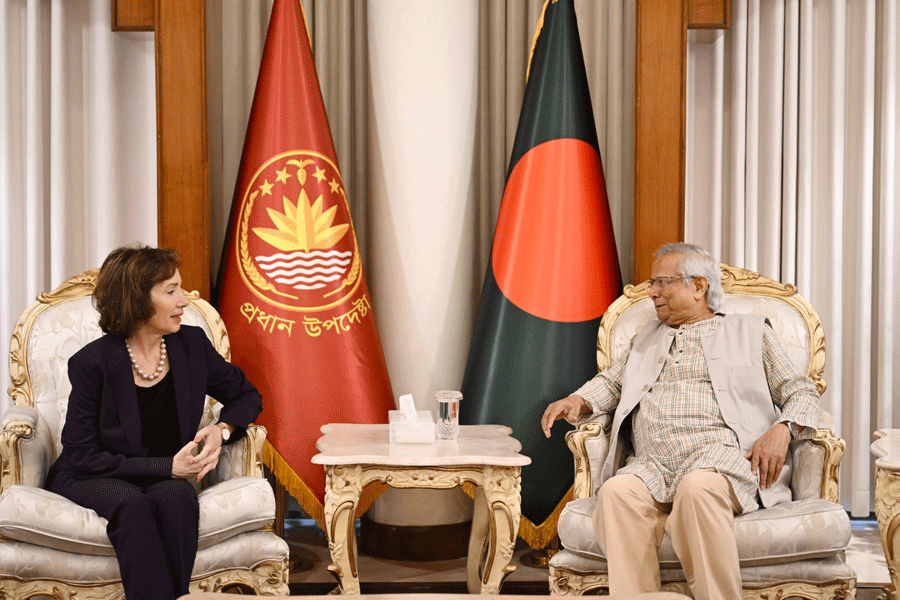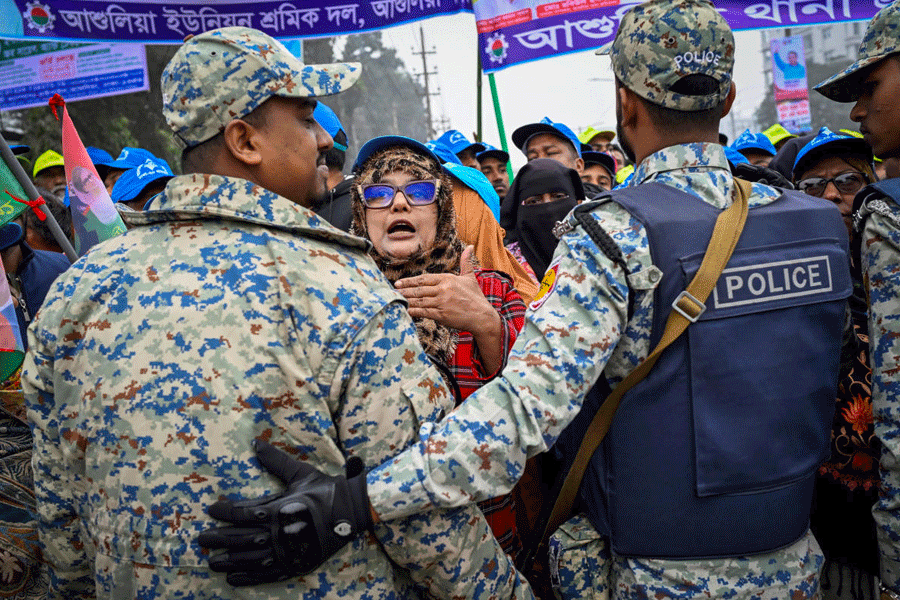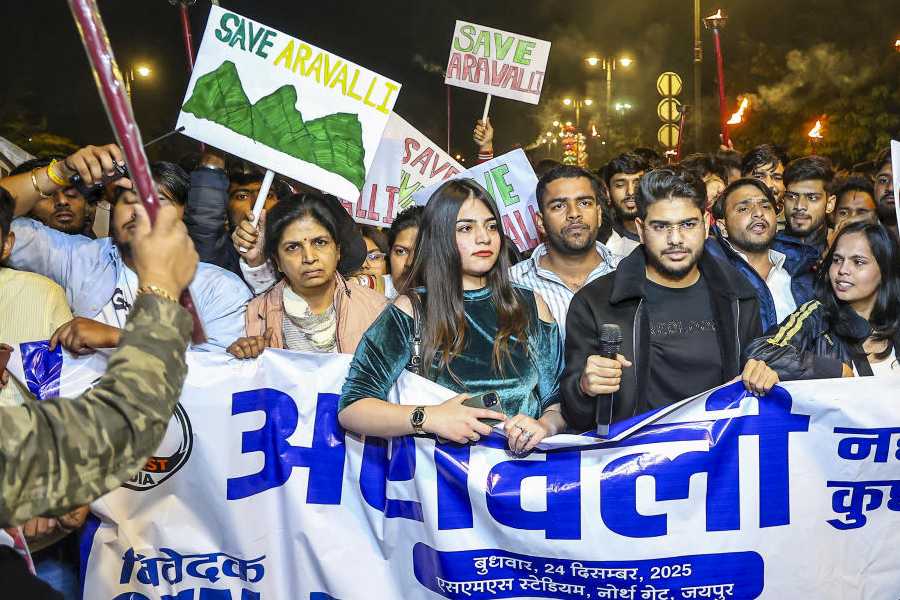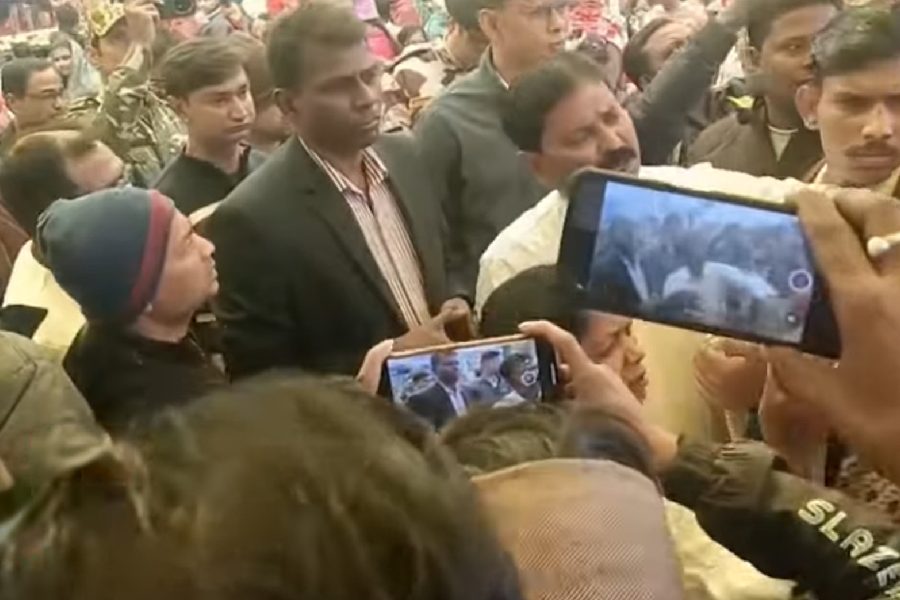|
|
| Not easy to handle |
I had argued last time that we have a superficial and thin veneer of liberal democracy in India. Indira Gandhi added “secular and socialist” to our Constitution. She never defined what she meant by either. Her secularism was aimed at building vote banks of Muslims and other minorities, scheduled castes and tribes, not to genuinely improve their condition. She appeared to favour Muslims in her policies (but not in the reality of those policies) and permitted the mass illegal immigration of Bangladeshi Muslims into India. She pushed for reservations, and other political parties made this into a bandwagon with reservations crossing 50 per cent. Reservations have helped only the better-off, with few opportunities for better education, health services and livelihoods for the poorest. Her socialism was rhetoric (garibi hatao), centralized control, anti-consumption, and the stifling of enterprise and economic growth.
The rise of the Bharatiya Janata Party after the Ayodhya mosque demolition has led to a trend for “majoritarianism” among all political parties. The pro-Muslim rhetoric of the Congress in the Indira Gandhi period is now much toned down; the Communist Party of India (Marxist) has no compunction about using state power to suppress farmers, who include members of the minority community, in Nandigram; and the Congress and its ally the National Congress Party have done nothing about punishing people identified by the Srikrishna Commission for the Bombay riots. Post-Godhra, the BJP connived through its government in Gujarat in the killing of members of the minority community. The Samajwadi Party that continued to tilt towards Muslims was defeated in the last Uttar Pradesh assembly elections. The Bahujan Samaj Party has co-opted Brahmins with Dalits.
The recent Gujarat elections show that the demonization of Narendra Modi for the Gujarat killings is counter-productive. It has also raised questions about the responsibility of Rajiv Gandhi and his then home minister, P.V. Narasimha Rao, for the Sikh killings in 1984 in Delhi. The Central government, by doing nothing for three days till over 5,000 Sikhs were dead, connived with the killers. The responsibility of Sharad Pawar and his NCP and the Congress that together run the Maharashtra government is the same in not taking action against the persons identified by a judicial commission as the killers of Muslims. The connivance of the Left Front government in West Bengal with CPI(M) cadres will one day be investigated and the culprits identified, if not punished. While the law takes its slow course on these and other such ghastly episodes, we must accept that Modi is not the only demon. The others are just not mentioned by ‘liberals’.
Does Modi’s single-handed triumph in Gujarat automatically make him into the next BJP prime minister after the increasingly irrelevant L.K. Advani fades away? It does not. There are many reasons for this. His tendency to vituperate against Muslims is unacceptable in our plural society and to the international community. The Modi personality cult in the Gujarat elections marginalized all other BJP leaders and the party itself. Despite having grown from the Rashtriya Swayamsevak Sangh, Modi saw to it that both the RSS and the Vishwa Hindu Parishad, the grassroots BJP organizations that everywhere get votes for the BJP, had no role in the Gujarat elections.
His model of Gujarati pride, successful development, oratorical skills (in Gujarathi), authoritarian style and incorruptibility succeeded in Gujarat. Most of these elements will not have equal impact elsewhere. Most of the South will find him unattractive. Northern states have their own local performing heroes in Mayavati, Nitish Kumar, perhaps Lalu Prasad, Parkash Singh Badal, Mulayam Singh Yadav and Vasundhara Raje Scindia. The somewhat battered but still monolithic Left Front will keep Modi out. Orissa is besotted with the non-Oriya speaking and Westernized Naveen Patnaik. Assam and the Northeast are far removed from Modimania. Possibly Modi might have some attraction in parts of Maharashtra, Madhya Pradesh, Jharkhand and Chhattisgarh. Even in these states Modi must undergo a change of image and persona.
As a clever organizational strategist, Modi will probably remain in his home base of Gujarat, but support a leader he can control at the national level, as in the successful (if not very effective) Sonia Gandhi-Manmohan Singh model. Rajnath Singh, if he is willing to bend to Modi (and he has little choice, given his inability to make an impact as the BJP chief), and Arun Jaitley are obvious choices for this role.
A serious challenge for Modi is the need to get acceptance from other parties in a Central coalition. The old National Democratic Alliance may not reach the numbers to form a government. It will need another group with 50 to 70 members of parliament to support it. The BSP under Mayavati is one possible contender for this role. But Modi cannot dominate her and she is likely to push her balancing advantage to demand the prime ministership. If J. Jayalalithaa gets the Dravida Munnetra Kazhagam’s number of MPs, she could be the alternative, but like Mayavati, she is equally ambitious for the number one job. Modi will not be able to control these independent ladies.
Where does this leave the Congress? The Congress has been on a downward slide from the time of Indira Gandhi. Her spectacular election victories after the coalition of 1967 were not as much due to her appeal to caste, community and tribal combinations as to extraneous factors. The war with Pakistan leading to the creation of Bangladesh gave her an image of invincibility — even Atal Bihari Vajpayee called her Durga. It gave her a huge majority. The Janata Party rule following the Emergency, and particularly Sanjay Gandhi’s masterstroke in getting the power-greedy and incompetent Charan Singh to topple the Morarji Desai government and become prime minister, enabled Indira Gandhi to return. Her assassination gave Rajiv Gandhi and the Congress a huge sympathy vote. With no extraneous factors to help, the Congress has since then never had a majority. It took time for the party to accept that coalitions were inevitable. It has yet to understand the essentials of a coalition dharma.
Indira Gandhi subverted inner-party democracy in the Congress, banished as well as prevented the emergence of other strong leaders. This is now the Congress culture. Annual sessions of the All India Congress Committee are indicative of inner-party democracy. Between 1951 and 1970, the Congress had 16 sessions of the AICC. In 1971-80 (the height of the Indira Gandhi years), there were three in all, and in each of the two decades till 2000 there have been two and two respectively. The other national parties, the BJP and CPI(M), have a better record of regular elections, wider consultations in formulating policies and promotion by merit — not by proximity to the ruling family. The result — the Congress has no state-level local leaders and none at the Centre. All power flows from the family.
Indira Gandhi started the practice of imposing chief ministers on Congress-ruled states and withdrawing them when they seemed to become popular or competent or powerful. Sonia Gandhi has followed this practice (for example, the tolerance of agitations against Sheila Dixit). Hence no Congress-ruled state has strong local leadership — an important reason for its defeat in Gujarat where it faced Modi, a powerful incumbent local leader. This will hurt the Congress badly in other states as well, where there are strong local opposition leaderships as in Rajasthan, Bihar, Uttar Pradesh, Himachal, Maharashtra (if Bal Thackeray is still around), Tamil Nadu, Andhra and even Karnataka.
Anti-incumbency (Varshney’s calculation that four out of five state governments have, since 1951, changed at each election) might give the Congress some state governments, but the number will keep declining as regional parties, the BJP and the Left, develop their bases. At the Centre, the only route for the Congress is downwards unless it ceases to concentrate power in the family and builds other leaders for the party. In this context, the Modi victory, not BJP but Modi, in Gujarat has fundamental implications for our future.











